Plums, a delight among tree fruits, are celebrated for their juicy sweetness and diverse varieties.
Belonging to the genus Prunus, these fruits are drupe characterized by a central seed encased in soft, flavorful flesh.
In the world of plums, the contrast between black plum vs red plum varieties often intrigues fruit lovers.
A plum tree with over 40 natural varieties can yield approximately 45kg of fruit annually, offering a bounty of choices for plum enthusiasts.
The Rich History of Plum Cultivation
The journey of plum cultivation is as rich and varied as the fruit itself, possibly making plums the first ever cultivated by humans.
Contrary to popular belief, plums may have first been cultivated not in orchards but near the Caspian Sea in the mountainous regions of Eastern Europe and the Caucasus.
Historical accounts suggest that plums traveled to Rome around 200 B.C., igniting a passion for plum cultivation in Northern Europe.
Another tale tells of the Duke of Anjou, who introduced plums to Europe upon returning from Jerusalem around 1200 A.D.
While these origins are shrouded in mystery, it’s widely accepted that cultivating plums, especially prominent varieties like black and red plums, has been a human endeavor for centuries.
Interestingly, plums are also mentioned in ancient texts dating back to 479 B.C., including those from China, where they were cultivated alongside other varieties.
The legendary Chinese philosopher Confucius even lauded the tart-flavored plums in his writings, highlighting their importance in ancient cultures.
Nutritional Benefits and Characteristics of Plums
Plums, including black and red plum varieties, are not just visually appealing but also nutritional powerhouses.
Rich in vitamins A and C and packed with antioxidants, they share these beneficial traits with their family members, like peaches and cherries.
The health benefits of plums extend from improving heart health and blood circulation to potentially aiding in reducing skin scars.
Physically, plums come in various shapes, predominantly oval or round, with a central stone.
The skin of these fruits shows a spectrum of colors – from deep purples and vibrant reds to sunny yellows. The flesh is typically amber-colored, soft, and brimming with juice.
In particular, black plum varieties are known for transforming into prunes when dried.
Regardless of type, a mature plum often develops a distinctive dusty white waxy coating, adding to its unique appearance.
Regular plums vary in size, generally measuring between 0.7″ to 2.7″ (2-7cm), offering a range of sizes for different preferences.
Japanese Plums
Focusing on Japanese plums, known scientifically as Prunus salicina, these varieties are known for their firm flesh and relatively quicker maturation process, requiring about 140-170 days to reach maturity.
Within the Japanese category, the black plum varieties stand out, not just for their taste but also for their striking appearance.
Black Plums
Renowned for their sweet flavor, these plums exhibit various colors, from bright red to deep purple.
Their firmness makes them ideal for baking, particularly in plum tarts, as they hold their shape well, contributing texture and visual appeal to dishes.
One of the most remarkable features of black plums is their ability to impart a stunning purple hue to culinary creations due to their dark skin.
This characteristic of black plums sets them apart, making them a favorite among culinary enthusiasts and those engaged in the comparison of black plums vs red plums.
Further sub-varieties within the black plum category continue to enrich the diversity of this group.
1. Black Ruby
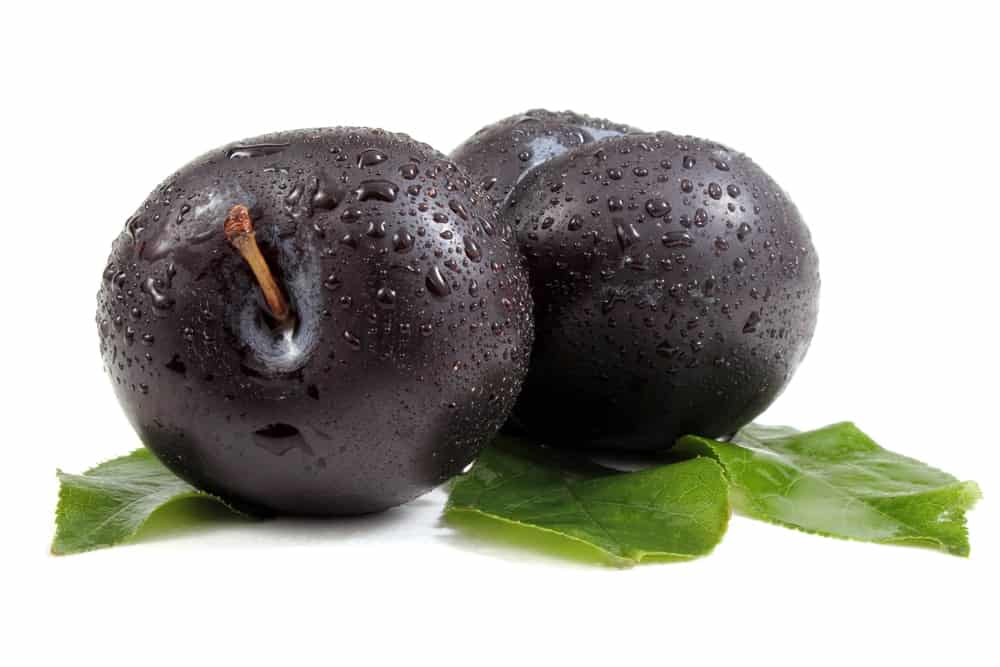
The Black Ruby is a celebrated variety among Japanese black plums, known for its reddish-black skin and contrasting succulent yellow flesh.
Ripening in mid-summer, these plums are categorized as freestone, meaning the flesh separates easily from the stone, enhancing their appeal for fresh consumption.
2. Friar
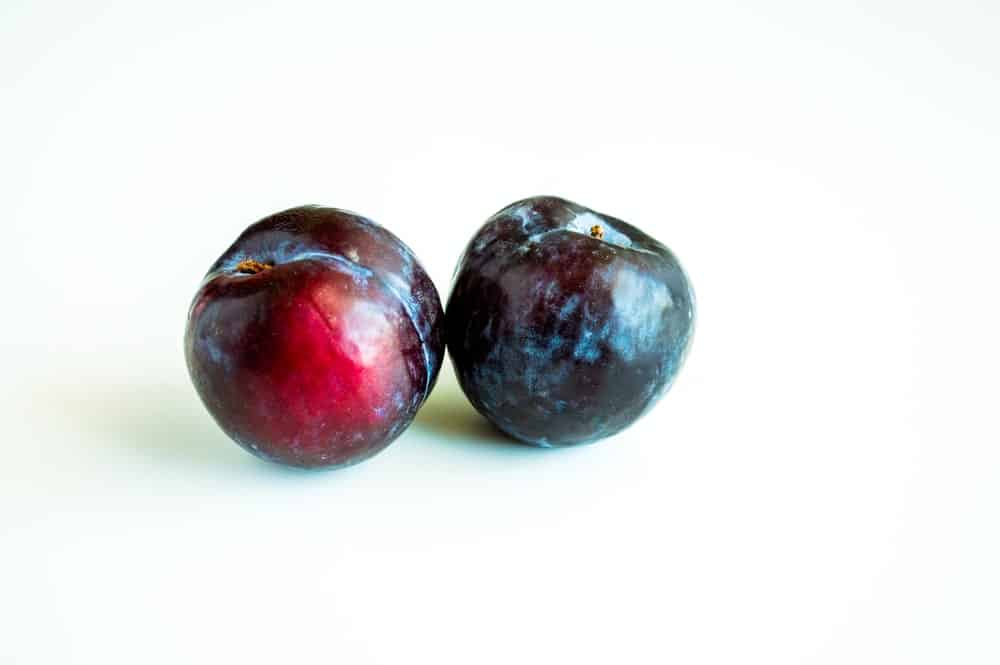
Another distinctive variety is the Friar plum, which is larger than other Japanese plums.
Friar plums boast dark purple skin with subtle shades of dusty blue wax coating, and their flesh is a sweet and juicy amber color. Their firmness makes them another excellent choice for fresh eating.
A notable feature of Friar plums is their extended harvesting period, usually ready by late August, and the trees are known for their abundant fruit production.
3. Black Beauty

Black Beauty stands out as a particularly luscious Japanese plum variety.
Characterized by its deep purple skin with red undertones and bright yellow, firm flesh, this variety offers a juicy and flavorful experience.
Medium to large, Black Beauty plums are popular for fresh consumption.
To determine ripeness, gently squeeze the plum; if it is soft, it’s ripe and ready to enjoy.
If it is slightly hard, place the plum in a paper bag to expedite ripening. This variety, known for its sweet taste with a hint of tartness, is best selected when free of spots and not overly hard.
4. Black Splendor

Black Splendor is a newer addition to the Japanese black plum family. These plums, with their blackish-blue skin and red-tinted flesh, range from mid-sized to large.
They belong to the clingstone category, meaning the flesh clings to the pit. Known for their sweet and rich flavor, Black Splendor plums are larger than average but not categorized as ‘large’ plums.
Unique for their early harvest, often in June, Black Splendor plums allow enthusiasts to enjoy the delights of the season earlier than other varieties like Black Beauty and Friar.
Red Plums

Red plums are laden with essential minerals like potassium, vitamins such as B-complex and A, and antioxidants that contribute to overall health.
These antioxidants are crucial in combating cancer and slowing aging, making each bite a healthful treat.
For those mindful of their weight, red plums are an excellent choice.
They contain about one gram of fiber and six grams of sugar per fruit, have a low-calorie count of just 30 calories, and are free from fat and cholesterol.
Phenol compounds in red plums prevent cholesterol buildup, reducing the risk of cardiac issues.
The skin of red plums varies from light to dark shades, including dark purple. The flesh, or mesocarp, ranges from red to light yellow, contributing to their diverse appeal.
According to the HortScience Journal (2004), red plums with a yellowish mesocarp are particularly nutrient-rich, making them a preferred choice for health-conscious consumers.
Yellow Plums

Yellow plums are known for their crisp, juicy texture, epitomizing the essence of freshness.
This crispness contributes to a delightful plumpness, making them a favorite among fruit enthusiasts.
They are seasonally available from August through November or December and are best consumed fresh to enjoy their full nutritional value and taste.
Beyond their fresh consumption, yellow plums are versatile in culinary applications. They are commonly used to prepare pies, juices, jams, and preserves.
Interestingly, a significant portion, almost ninety percent, of yellow plums is transformed into brandy or jams, showcasing their adaptability in various forms.
Prunus Domestica or European Plums
These plums distinguish themselves with a drier texture and shapes that range from rectangular to elliptical, commonly labeled as “Fresh Prunes” in the market.
Prunus Domestica ranks among the oldest plum species cultivated in temperate zones. Its roots trace back to ancient civilizations in Syria and Rome.
Interestingly, during the Crusades, European plums were spread to Western Europe by the Romans, leading to their widespread cultivation across the continent.
These European Plums are celebrated for their variety, available in an extensive palette of colors and flavors, each offering a unique culinary experience.
1. Moyer Plums

Among the European plum varieties, Moyer Plums are notable for their elongated shape and less rounded edges, distinguishing them from other plum types.
They are especially sought after for their sweet flavor and impressive ability to retain this flavor, making them a popular choice both for fresh consumption and culinary use.
With their unique flavor retention quality, Moyer plums are a testament to the diversity within the European plum category.
2. Greengage Plums
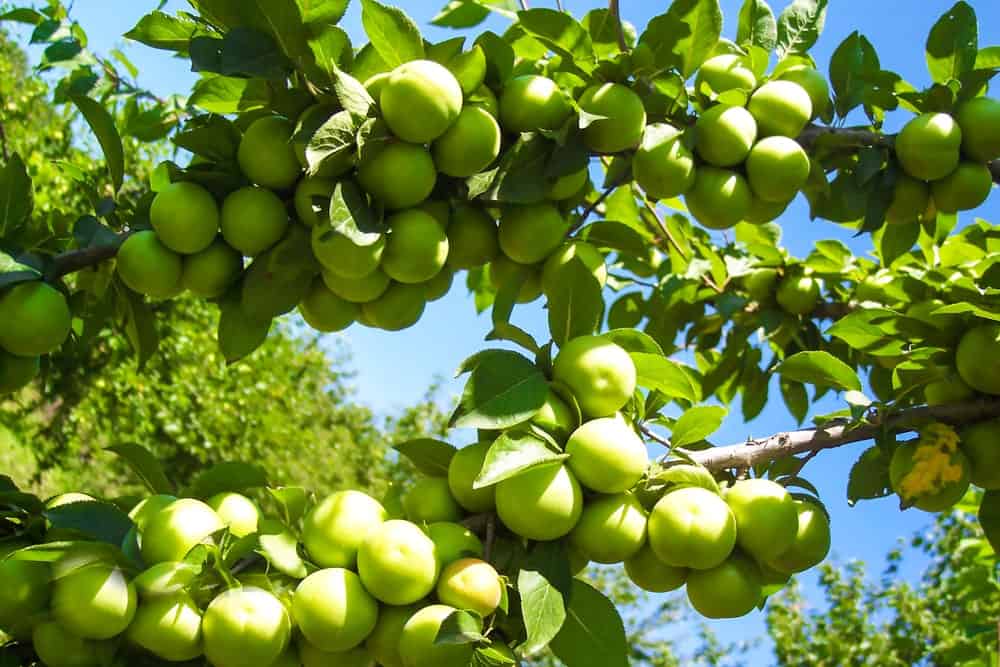
Greengage Plums presents a unique twist in the European plum line-up.
Their green skin may give the impression of being unripe, but these plums are fully mature and surprisingly sweet, challenging the usual association of green fruits with a sour taste.
Greengage plums are renowned for having one of the highest sugar concentrations among plums.
Their varied appearance, ranging from small to mid-sized with either a faded yellow-green or a vivid lemon-colored skin occasionally dotted with red, adds to their appeal.
3. Mirabelle Plums
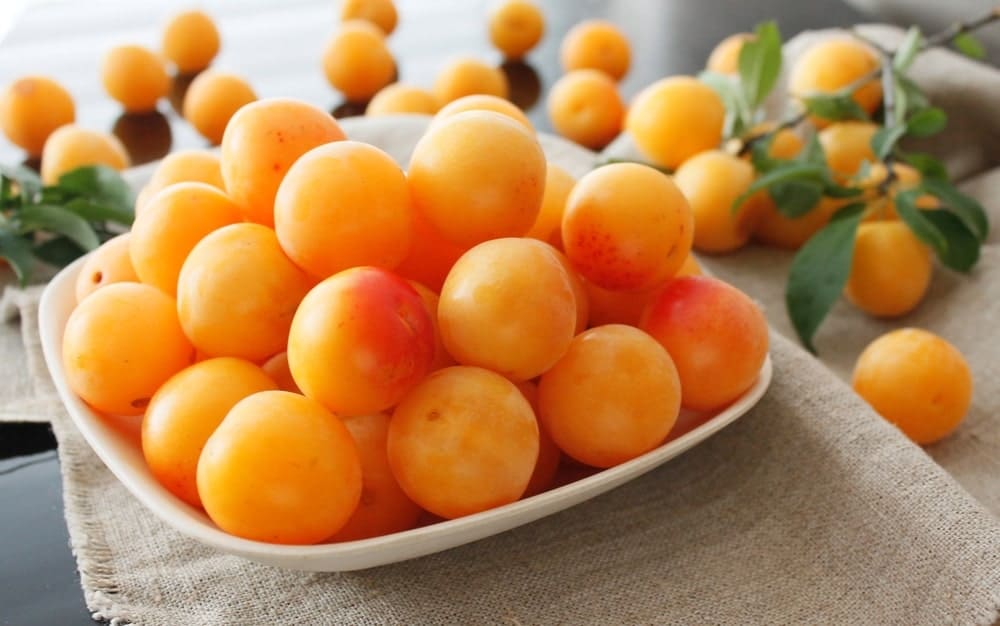
Mirabelle Plums, belonging to the genus Prunus and also known as Cherry Prunes or Mirabelle Prunes, are predominantly harvested in France.
This makes them a rare and sought-after variety. Their charming appearance, small size, and pleasantly sweet, almost syrupy flavor make them a delight to consume.
They are particularly favored in creating jams, bakery products, and fruit brandies known as eau de vie.
Due to their unique taste and quality, true Mirabelle Plums are considered a specialty of France, rarely matching the same flavor when grown elsewhere.
Their sensitivity to transport conditions makes them less suitable for export, preserving their exclusivity.
Plucots
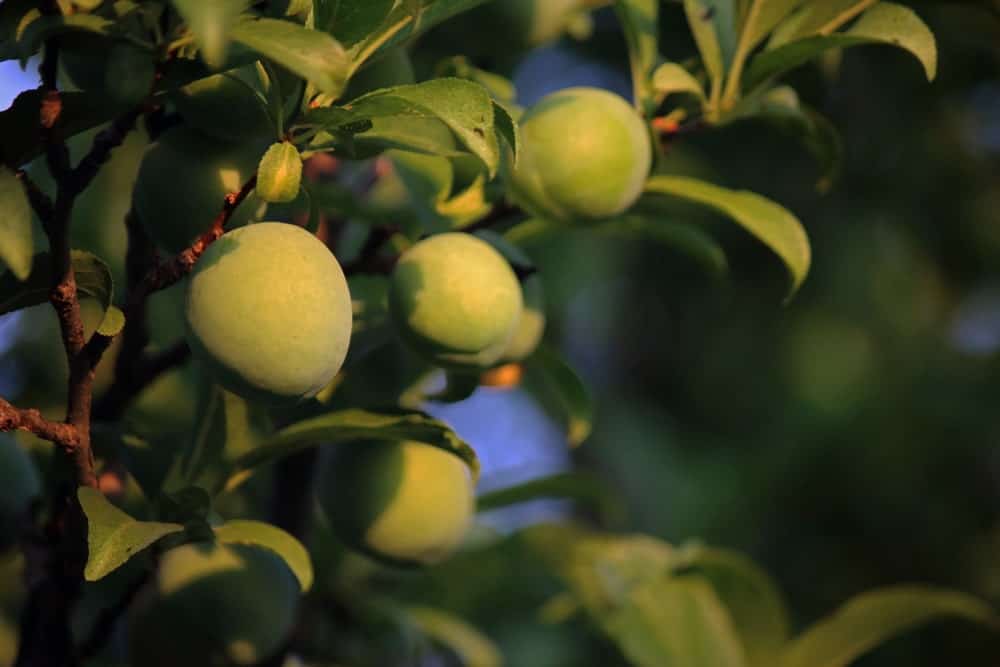
Plucots represent an innovative hybrid, blending an apricot and a plum.
These fruits exhibit a distinctive yellowish to greenish-yellow skin and a striking bold or champagne pink flesh.
The shape of Plucots is typically oval with a patchy exterior, a contrast to the traditional shapes seen in the black plum vs red plum varieties.
Their texture is firm and crisp, making them versatile for various culinary uses, including jams, brandies, and baked goods.
Plucots’ unique hybrid nature contributes a new dimension to the plum family, offering a blend of flavors and textures.
Pluots
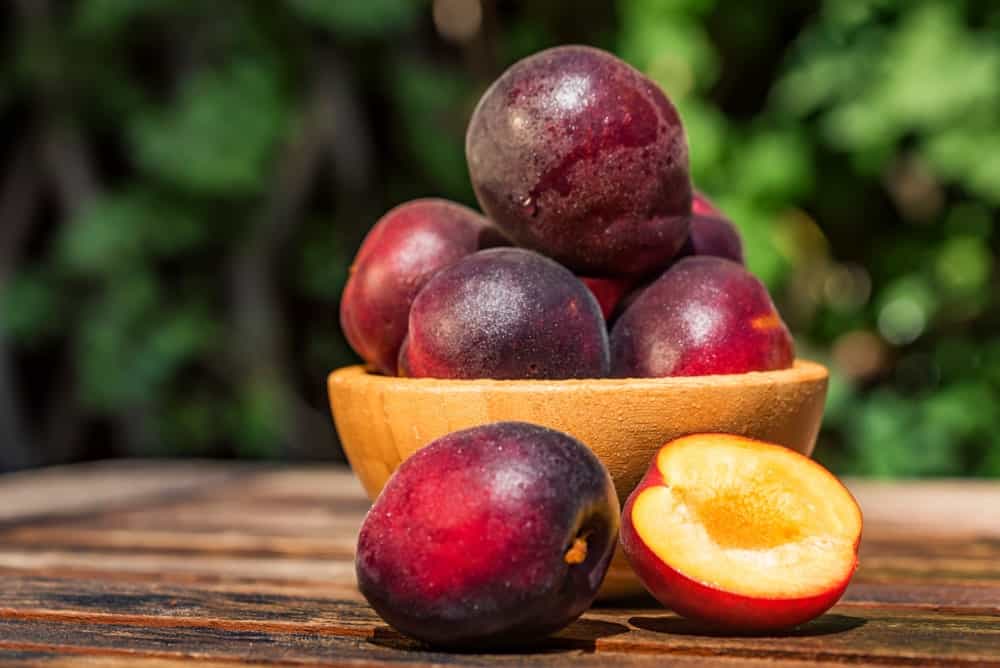
Pluots lean more towards plum characteristics, comprising about 70% plum and 30% apricot. This blend produces a predominantly plum-like fruit, differentiating it from its relative, the Plucot.
Pluots are particularly cherished for their high sugar content, making them an irresistible treat for those who love sweet flavors. Their sugar concentration imparts a delightful sweetness that’s hard to resist.
When selecting Pluots, avoiding any that feel soft or soggy is essential, as these may be overripe. The ideal Pluot is vibrant, fresh-looking, and firm to the touch. Regarding storage, Pluots have a shelf life of about three days at room temperature and can be refrigerated for up to a week.
Conclusion
In our journey through the colorful and diverse world of plums, we’ve explored a range of varieties, from the juicy black and red plums to the innovative hybrids like Plucots and Pluots.
Each variety offers its unique blend of flavors, textures, and nutritional benefits, making plums a versatile and delightful choice for fruit lovers.
Whether you prefer the sweet burst of a black plum or the tartness of a red plum, there’s a plum out there for every palate.
Craving for some plum delights? Dive into the world of plums and discover your favorite variety today. Share your plum experiences and favorite recipes in the comments below!

